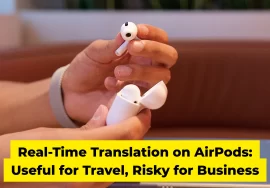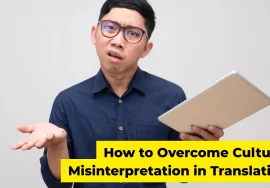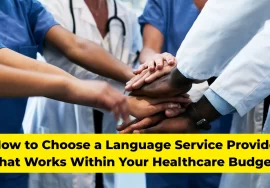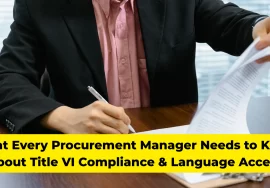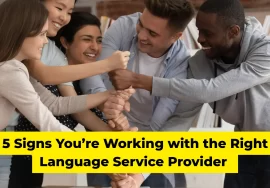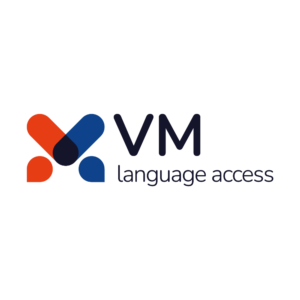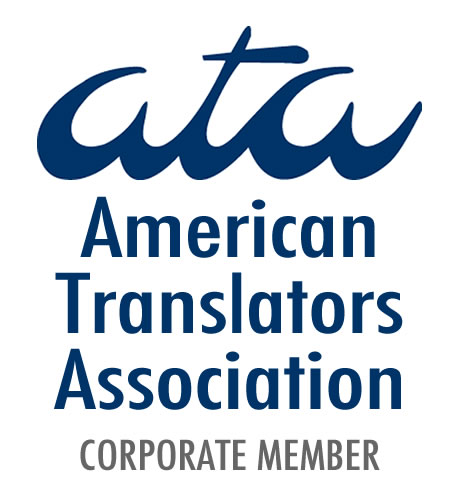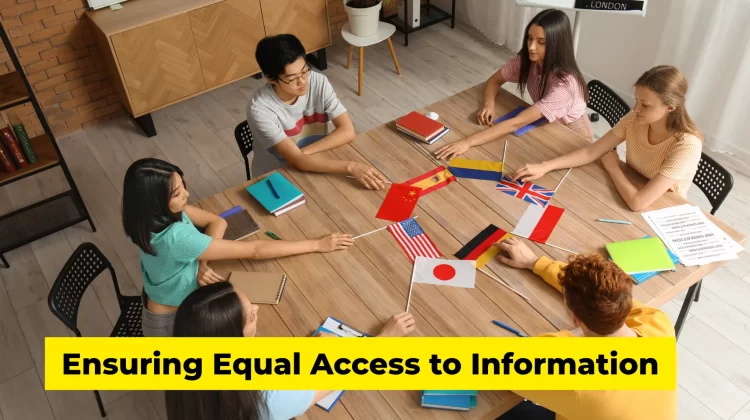
Ensuring Equal Access to Information: Best Practices for Title VI Compliance in Multilingual Settings
Creating inclusive, accessible environments is more than a good practice—it’s a legal requirement under Title VI of the Civil Rights Act of 1964. For Title VI Coordinators, ensuring that all individuals, regardless of language proficiency, have equal access to public services is a daily priority. But doing this effectively, across multiple languages and communities, can feel overwhelming without the right strategies in place.
In this article, we’ll walk through best practices for Title VI compliance in multilingual settings. Whether you’re overseeing a clinic, a school, or a state-run institution, this guide is packed with actionable insights—and we’ll also highlight how VM Language Access (VMLA) can support your compliance efforts with cost-effective, professional solutions.
What Title VI Requires in Multilingual Environments
Title VI prohibits discrimination based on national origin in programs and activities receiving federal financial assistance. This includes language-based discrimination. Simply put, if someone cannot understand the language in which a service is provided, they are being excluded.
For Title VI Coordinators, this means more than just printing a flyer in Spanish. It means building systems that actively address language barriers so every individual can access services, understand their rights, and fully participate in programs.
The Risk of Non-Compliance
Before diving into best practices, it’s worth understanding the potential risks. Failing to meet Title VI standards can lead to:
- Civil rights complaints
- Investigations from the U.S. Department of Justice
- Loss of federal funding
- Community mistrust and reputational damage
Non-compliance doesn’t just affect funding—it undermines public trust and the ability of institutions to serve diverse communities effectively.
Step One: Conduct a Language Needs Assessment
The first step toward Title VI compliance is knowing who you’re serving. A thorough language needs assessment helps determine what languages are most commonly spoken in your community and which materials or services need to be translated or interpreted.
Here’s how to get started:
- Use U.S. Census data and local demographic information to determine the top languages spoken by Limited English Proficient (LEP) populations.
- Review service usage trends—what languages do people speak when they walk into your office, call your hotline, or enroll in your programs?
- Talk to front-line staff to gather anecdotal evidence about language needs not yet addressed by current materials.
VMLA can assist agencies with language mapping by helping gather data and interpret trends, ensuring your services align with actual community needs.
Step Two: Prioritize Language Services Strategically
Once you know which languages are essential, decide where to focus your efforts. Not every document needs to be translated into every language, but critical materials and high-traffic service points should be multilingual.
Key materials to translate:
- Consent forms
- Eligibility criteria
- Public notices
- Program information
- Health or legal rights documents
Key areas to provide interpretation:
- Intake appointments
- Emergency services
- Public meetings or hearings
- Educational and IEP meetings
- Medical consultations
The goal is not just volume—it’s impact. VMLA helps clients prioritize what to translate based on visibility, usage, and legal implications.
Step Three: Work with Qualified Linguists
This is where many agencies unintentionally fall short. Relying on bilingual staff who are not trained interpreters or translators can lead to errors, miscommunication, and even legal liabilities. Title VI requires the use of qualified, professional language providers.
VMLA only works with trained linguists who understand not just the language but the cultural and technical nuances of each field. Whether it’s a legal form or a medical intake, the right word choice matters.
Why professional linguists matter:
- They follow industry standards and ethical guidelines.
- They avoid literal translations that can lead to confusion.
- They understand the legal implications of misinterpretation.
- They ensure confidentiality, especially in sensitive environments.
Step Four: Provide Interpretation in Real Time
Interpretation services are often where compliance fails. Flyers and posters can be translated in advance, but real-time interactions—like at a clinic or a government office—require on-the-spot interpretation.
VMLA offers flexible interpreting solutions, including:
- Remote interpreting (via phone or video)
- In-person interpretation (for scheduled or ongoing appointments)
- On-demand access for last-minute needs
Having a plan in place for interpretation ensures your office is always prepared to communicate clearly, without scrambling for support when someone walks in speaking a different language.
Step Five: Use Plain Language and Cultural Adaptation
Translation isn’t just about converting words—it’s about making sure the message lands. That’s why cultural adaptation and plain language principles are vital for compliance and community engagement.
Best practices include:
- Writing in plain language from the start so materials are easier to translate.
- Avoiding idioms or region-specific jargon.
- Culturally adapting messages so they resonate with the intended audience.
- Localizing images, symbols, and design elements for cultural relevance.
VMLA’s translators are trained to culturally adapt content, ensuring that translated materials are not just correct—but also appropriate and respectful.
Step Six: Create a Language Access Plan (LAP)
An official Language Access Plan is your playbook for compliance. It outlines how your agency identifies, addresses, and monitors language needs. A solid LAP can be a powerful tool for transparency, accountability, and preparation for audits.
A typical LAP should include:
- The results of your language needs assessment
- Procedures for identifying LEP individuals
- Protocols for offering translation and interpretation
- Staff training requirements
- Contracts or partnerships with language service providers
- Plans for monitoring and evaluating language access efforts
VMLA can help develop or review your LAP to ensure it meets best practices and aligns with federal requirements.
Step Seven: Train Your Staff
Even the best translation strategy will fail without internal support. Front-line staff need to understand the importance of Title VI, how to identify language needs, and what to do when someone requires language assistance.
Staff training should cover:
- How to spot signs of limited English proficiency
- When to offer interpreters vs. translated materials
- How to request interpretation services quickly
- Why it’s not okay to “just try to help” without language support
VMLA offers staff training modules to help your team confidently manage multilingual encounters.
Step Eight: Budget Wisely Without Cutting Corners
Budgeting for language services can feel tricky, especially for smaller institutions. But cutting corners can be risky, both legally and ethically.
VMLA works with public agencies to offer:
- Flexible pricing models based on usage
- Volume discounts for recurring translation work
- Customized packages that align with specific needs and budgets
We also help clients avoid hidden costs, like the consequences of poor translations or rescheduled appointments due to language mix-ups.
Step Nine: Monitor, Evaluate, and Adjust
Language needs change over time. Populations shift, new services launch, and better tools become available. Compliance isn’t a one-and-done task—it’s an ongoing commitment.
Ways to stay up to date:
- Revisit your language needs assessment yearly
- Survey LEP clients about their experiences
- Track usage of translated materials and interpreters
- Adjust your LAP as needed
- Stay informed about updated guidance from federal agencies
VMLA partners with agencies long-term, offering check-ins, reporting tools, and insights to help refine your language access approach over time.
How VM Language Access Supports Title VI Coordinators
VMLA is not just a vendor—we’re a partner in compliance. Our services are designed specifically for public agencies and institutions seeking to serve diverse communities fairly and effectively.
Here’s what we bring to the table:
- A network of professional interpreters and translators
- Expertise in legal, educational, medical, and public service language
- Personalized support and flexibility
- Affordable pricing that meets procurement standards
- Assistance with Language Access Plans and training
When you work with VMLA, you’re choosing a partner who understands the weight of Title VI compliance—and who’s ready to help you succeed.
Title VI compliance is about more than avoiding risk—it’s about doing the right thing for the communities we serve. Every resident deserves the chance to understand their rights, access services, and be part of the conversation—regardless of what language they speak.
By following best practices, training your staff, budgeting strategically, and working with trusted partners like VM Language Access, you can build a system that not only checks the compliance boxes—but genuinely makes a difference.
Whether you’re just getting started or reviewing an existing Language Access Plan, we’re here to help you navigate it all. Let’s make language access easier, more effective, and more human—together.
Need help meeting your Title VI requirements? Contact VM Language Access today to get started.



